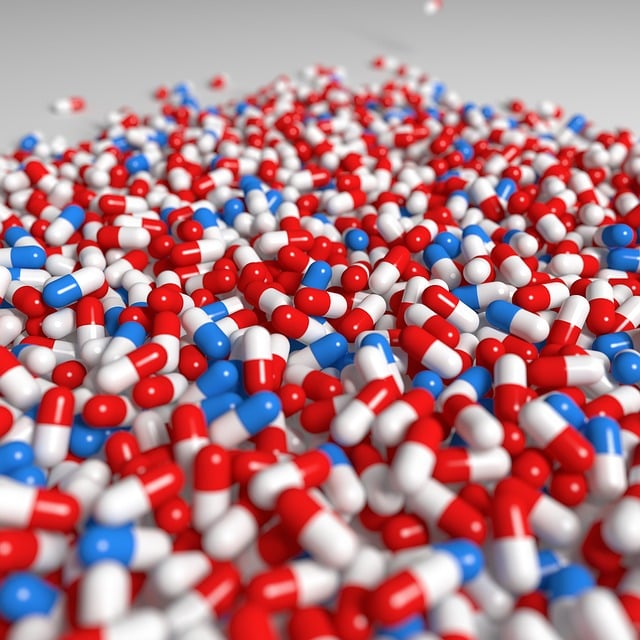Opioid Rehabilitation Success Stories: Transforming Lives in Keene, NH
Opioid addiction in Keene, New Hampshire, has led to a surge in demand for comprehensive Opioid Trea…….
Over 15% US adults have used prescription painkillers not prescribed to them.
In the heart of New Hampshire’s scenic landscape lies a critical initiative that has garnered national attention—Keene’s Opioid Treatment Program. This article aims to dissect and explore every facet of this pioneering effort, offering insights into its design, impact, and potential for transforming lives affected by opioid use disorders. By delving into various dimensions, from global implications to technological innovations, we will uncover the intricate world of opioid treatment and rehabilitation.
What is an Opioid Treatment Program?
In simple terms, an Opioid Treatment Program (OTP) is a comprehensive healthcare initiative designed to help individuals struggling with opioid use disorders. These programs offer a combination of medical, psychological, and social services tailored to support recovery. OTPs typically include prescription medication-assisted treatment (MAT), counseling, and aftercare services.
Core Components:
Historical Context:
The opioid crisis in the United States has been building for decades, with New Hampshire not immune to its devastating effects. In response, Keene, a vibrant city known for its community spirit, launched an ambitious OTP in 2017, recognizing the urgent need for effective treatment options. This program was born out of collaboration between local healthcare providers, law enforcement, and community advocates.
The opioid crisis has transcended national boundaries, becoming a global health emergency. According to the World Health Organization (WHO), an estimated 50 million people worldwide struggle with drug use disorders, with opioids playing a significant role in this figure. Keene’s OTP contributes to international efforts by sharing its successful strategies and outcomes, offering valuable insights for other communities facing similar challenges.
Regional Disparities:
Shaping the Future:
Global initiatives, such as the United Nations’ Sustainable Development Goals (SDGs), emphasize the importance of addressing substance abuse and providing access to quality healthcare. The fight against the opioid crisis has become a collaborative global effort, with best practices and research findings shared across borders.
The economic burden of the opioid crisis is profound and multifaceted. Understanding these dynamics is crucial for evaluating the long-term sustainability and effectiveness of Opioid Treatment Programs (OTPs).
Market Analysis:
Economic Impact:
Technology plays a pivotal role in transforming opioid treatment by improving access, efficacy, and patient outcomes. Here are some notable advancements:
The development and implementation of OTPs are significantly influenced by policies and regulations that vary across jurisdictions. Understanding these frameworks is essential to ensuring ethical and effective treatment practices.
Key Policies:
Regulatory Bodies:
Despite its potential, the opioid treatment landscape faces several challenges and criticisms that require careful consideration and strategic solutions.
Common Issues:
Strategic Solutions:
Keene’s Opioid Treatment Program—A Model for Success:
Community-Based Approach: Portland, Maine:
The future of opioid treatment holds immense potential for innovation and positive transformation. As the crisis continues to evolve, new strategies and technologies will shape the landscape.
Emerging Trends:
Growth Areas:
The opioid treatment landscape, as exemplified by Keene’s program and other successful initiatives, has come a long way since its humble beginnings. By combining medical, psychological, and social interventions, OTPs offer a holistic approach to addressing this complex crisis. As we look ahead, the future of opioid treatment promises personalized care, innovative technologies, and global collaboration.
Q: How effective are medication-assisted treatments (MAT) for opioid addiction?
A: MAT has been proven highly effective in reducing opioid use and mortality rates when combined with behavioral therapies. Medications like Buprenorphine and Methadone help stabilize cravings, making it easier for individuals to focus on their recovery.
Q: Are OTPs accessible to everyone, regardless of income?
A: While OTPs aim to provide accessible care, funding and insurance coverage can vary. Medicaid programs often cover a range of OTP services, ensuring affordability for low-income individuals. Community partnerships and sliding fee scales also help make treatment more accessible.
Q: What role does community support play in opioid recovery?
A: Community support is invaluable in opioid recovery. Local churches, businesses, and peer support groups provide a sense of belonging, reduce stigma, and offer ongoing encouragement, all vital components for sustained recovery.
Q: How can technology improve the treatment process?
A: Technology enables remote counseling, mHealth apps for self-monitoring, and digital therapeutic interventions, increasing access to care. AI algorithms predict relapse risks, and wearable devices track vital signs, providing valuable data for personalized treatment plans.

Opioid addiction in Keene, New Hampshire, has led to a surge in demand for comprehensive Opioid Trea…….

The opioid crisis in Keene, NH, demands comprehensive Opioid Treatment Programs (OTPs) that go beyon…….

Opioid Treatment Programs in Keene, New Hampshire play a vital role in combating the opioid crisis b…….